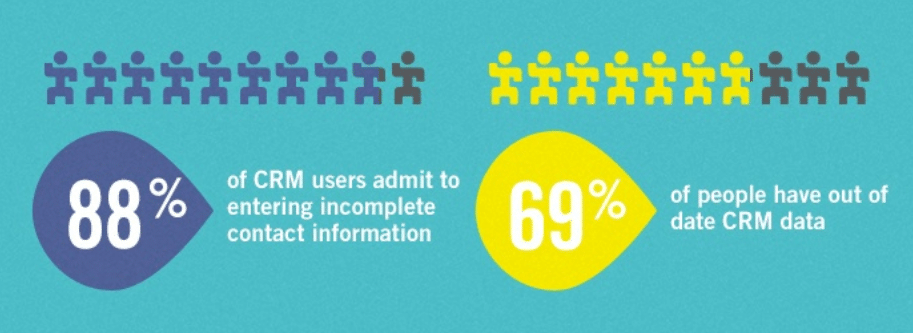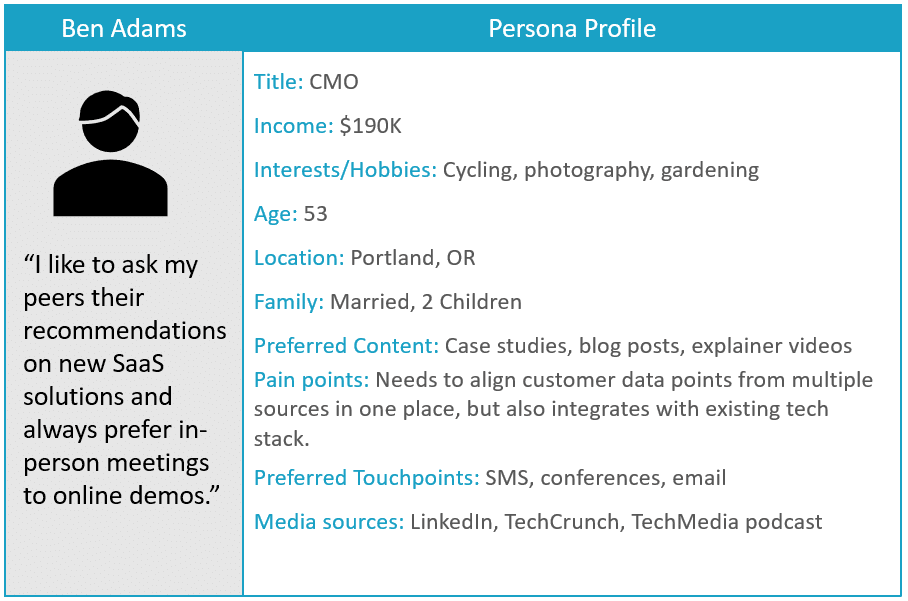
Last month I discussed how important aligning sales and marketing is as a key growth strategy for SaaS businesses targeting B2B buyers. In this post, I’m going to outline exactly what that means from a tactical (and practical) perspective.
Today’s complex B2B buying journey involves multiple touchpoints and pieces of content, multi-member buying teams, and sales cycles that range from an average of 4 to 7 months (often longer).
The standard approach to marketing in this environment involves a separation of marketing and sales — marketing teams plan and drive lead volume and sales teams sift through, qualify, and sell to prospects.
However, a complex and ever-expanding B2B SaaS marketplace, successful business growth can only be driven collaboratively with sales and marketing working together to identify, market to, and connect with the most qualified leads and accounts. In this post, I highlight four tactics that B2B businesses can immediately implement to align their sales and marketing teams.
Tactic #1: Your CRM platform is your best collaboration tool
CRM software (e.g., HubSpot, Salesforce, etc.) comprises the biggest software market in the world. This market is projected to reach over $80 billion in revenue by 2025. In 2008, about 12% of businesses used cloud-based CRM versus 87% today.
The ubiquity of CRM usage means that most companies have distributed, real-time access to not only their customer data, but to the sales pipeline itself. This includes (but is not limited to):
- Contact information (names, addresses, titles, etc.)
- The type of companies and contacts that typically close
- How long it takes an average deal to close
- What barriers exist that may kill or jeopardize a sale
- Transactional data such as average sales value and lifetime value of a customer
Sales reps in the field can be reluctant to use their company’s CRM system with any consistency. CRM software takes time to learn and use, requiring reps to spend valuable time entering data versus selling.
The data that’s entered can also be inaccurate or incomplete, with nearly 90% of CRM users admitting to entering incomplete contact information and 70% of users acknowledging that their CRM data is out of date.

Even with inconsistent, outdated, and incorrect data, your CRM system contains a wealth of important information about your business. This should be your starting point when aligning sales and marketing.
I recommend creating a company wide initiative that emphasizes the importance of CRM usage. Add automation to the process of data normalization so that the reps who are using the system the most, don’t have to worry about entering customer information perfectly.
Likewise, when external data is imported into your CRM, it can be inconsistent so tools exist to help automate the task of data integration and normalization.
Once your data has been normalized and the process of normalization automated, your sales and marketing teams now have a foundation for identifying (and reaching out to), the most viable prospects. This should absolutely be your starting point for marketing and sales collaboration.
Tactic #2: Designate a champion to align both teams
Most companies separate their marketing and sales teams, with each respective team headed up by a CMO vs. a Business Development VP.
Both executive roles come with a host of responsibilities and expectations which, at first glance, may seem vastly different. But the end goal for both teams is business growth, and that requires communication and collaboration in an ongoing, strategic way.
When aligning sales and marketing, I recommend appointing a champion in one or both departments who is responsible for spearheading collaboration between the two teams.
Collaboration looks different depending on your company type, size, and goals, but a good way to get started is by planning to meet consistently (monthly, bi-monthly, or even weekly) to ensure both teams are working to achieve business growth in a collaborative, productive way.
Tactic #3: Create buyer personas using input from both teams
A buyer persona is a fictional profile of your ideal buyer that’s used to help inform marketing messaging and targeting. Personas give a face to your target audience segment, helping clarify specific points such as age, title, type of business, preferred content, pain points, and more.
The personas we create for CommonMind include additional details like interests/hobbies, income, preferred touchpoints and popular media/information sources. The following is an example of an SaaS CMO persona we created.

Developing personas is a great way to kick off marketing and sales team collaboration. It requires that members of both teams have a voice in determining the ideal target. To this end, it can be helpful to involve your company leadership, customer service, and anyone else with client facing responsibilities.
Your target personas will, ideally, become the foundation for your content and marketing strategies, helping you identify the best tactics and messaging for reaching your audience.
Tactic #4: Marketers must think like sales and vice versa
Marketing and sales teams traditionally have different priorities. Sales is all about immediacy — identifying leads and closing deals as quickly as possible. Sales is also transactional, with revenue linked directly to the sales team’s efforts.
Marketing’s focus has traditionally been more long term and strategic. As such, it can be difficult for marketers to think transactionally and tie their efforts directly to business growth (particularly if they’re focusing on vanity metrics, but I’ll save that issue for a different post).
Marketers create a plan for generating leads, then executes and tracks the campaigns they create (often with little to no input from sales).
Effectively aligning sales and marketing requires that each team flips the script. Marketing must think more like sales — e.g., what leads are more likely to convert now rather than six months or a year from now? How can we best reach bottom-of-funnel buyers?
Conversely, sales must think more long term — e.g., what is a sustainable way to reach the most qualified and relevant prospects? What messaging best meets the needs of our target personas?
Get sales involved in marketing to the extent that they help create the messaging and inform the creative. Get marketing involved in sales to the extent that they sit in on (or listen to) sales calls, review active deals, and pick the brains of the frontline reps ensures that every task involved with business growth is performed with intention. This is the true foundation of ongoing, sustainable growth.
Don’t overcomplicate things
Sales and marketing alignment doesn’t need to be complicated. The foundation for making this approach work is communication. Start by appointing a champion for this approach, take a deep dive into your CRM data, establish regular meetings and ways to connect, and flip the script on both teams so they understand each other’s motivations, pain points, and needs.
When everyone works together, it’s possible to realize consistent year over year growth even in a sector as cluttered and diverse as the SaaS B2B tech market.
***
Contact us to learn more about our B2B-focused digital marketing services which include SEO, paid search, social media, content creation and more. We’re happy to provide a free 30-minute consultation.
Share this
You May Also Like
These Related Stories

How to Grow Your SaaS Business in 2020 (Hint, Align Marketing and Sales)

CommonMind Recognized as a Top PPC Agency
